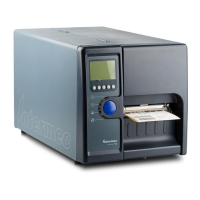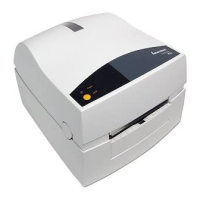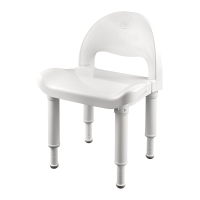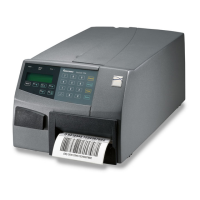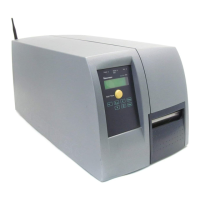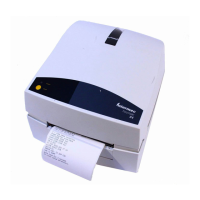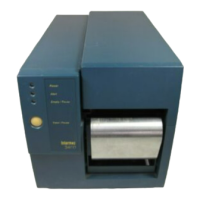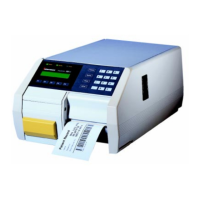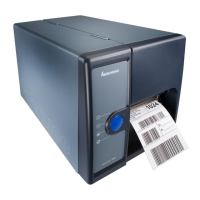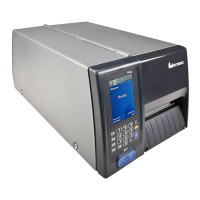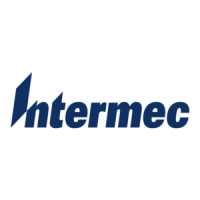Chapter 3 — Replacing Parts
50 EasyCoder PD41/PD42 Printer Service Manual
The direct thermal printing method requires special media coated with a
thin layer of heat-sensitive chemicals. As the media is fed past the dots, the
heat from the dots will make the chemicals react, producing a dark salt,
which makes up the imprint under each dot.
In the thermal transfer printing method, a special ink-coated transfer
ribbon is used. When the ribbon is heated by a dot on the printhead, the
ink melts and sticks to the receiving face material, where the ink
immediately becomes solid again, producing a black spot. Transfer ribbons
normally do not smear at room temperature, neither before nor after
printing. Nor do the printed labels smear, even if the printout may be
smudged by extensive rubbing if an unfortunate combination of ribbon
and face material is used. The thermal transfer method makes it possible to
use a wide range of face materials for printing, for example papers, boards,
plastics, foils, etc. However, an original transfer ribbon from Intermec
should always be used.
Information on how to switch between direct thermal and thermal transfer
printing is provided in the user’s guide of each respective printer.
The EasyCoder PD41/PD42 printer can be fitted with two printheads with
different densities:
• In a 203.2 dpi printhead (8 dots/mm), each dot under standardized
conditions will produce a black spot which has a diameter of 4.92 mils
(0.125 mm).
• In a 300 dpi printhead (11.81 dots/mm), each dot under standardized
conditions will produce a black spot which has a diameter of 3.33 mils
(0.086 mm).
Depending on dot temperature, exposure time, media and ribbon
characteristics, etc., the spot may actually be somewhat smaller (weak print)
or larger (black print). However, that does not affect the calculation of
distances, sizes, and positions.
The printhead is subject to wear both from the direct thermal media (or
ribbon) and from the rapid heating and cooling process during printing.
Thus, the printhead will require periodic replacement.
Time between printhead replacements depends on the print images, the
type of direct thermal media (or ribbon) in use, the amount of energy to the
printhead, the print speed, the ambient temperature, and several other
factors.
Note: When switching to a printhead with a different density, the
printhead PCB must also be replaced.
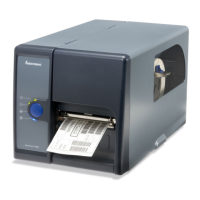
